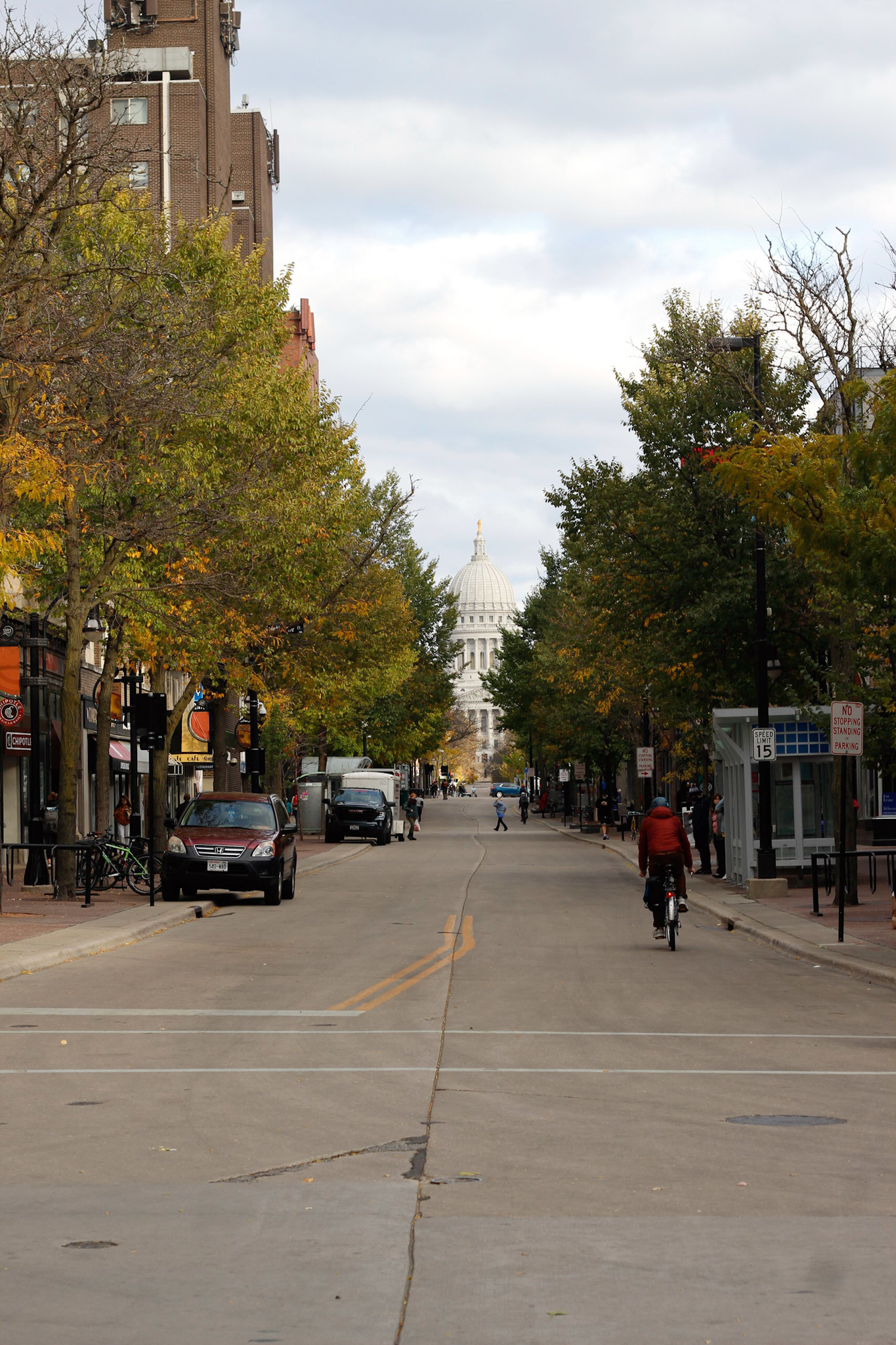Is student drinking culture at UW an impact of the drinking culture in Wisconsin as a state?

Photo by Caroline Crowley.
By Kelsey Barrett
Wisconsin. The state of beer and cheese. What’s not to love about that?
Known as the dairy state, Wisconsin is also home to a plethora of bars and government policies that make drinking accessible to just about everyone.
According to the Wisconsin Department of Health Services, Wisconsin ranks third in the country for the percent of adults who currently drink alcohol. More Wisconsin adults report current alcohol use in the past 30 days (64.8%) than the national average (55.1%).
The University of Wisconsin-Madison, the state’s largest university, has unsurprisingly adopted a heavy drinking culture. Many attend the university because of its party scene and abundance of local bars. For some, the campus embodies an opportunity to explore partying and drinking.
I wonder, is the heavy drinking culture on campus a direct result of the drinking culture in the state as a whole?
According to the Office of Student Conduct and Community Standards 2021- 2022 Annual Report, 1,045 alcohol/ controlled substance charges were given, and 904 alcohol use or possession charges were given in 2022 alone.
Tonya Schmidt, the Assistant Dean of Students at UW-Madison, explained that most students at UW-Madison drink to socialize and fit in. Schmidt oversees the Office of Student Conduct and Community Standards which is responsible for investigating and adjudicating academic and nonacademic misconduct, along with student organization misconduct.
“Students all want to feel a sense of belonging and they think drinking to meet people is the only way to do it,” Schmidt said.
While this may be true for the majority of white students on campus, it differs for marginalized students and students of color.
We need to stop normalizing and glamorizing the drinking culture on and off campus.
Tonya Schmidt
University Health Services conducted a study in 2017 called “Color of Drinking,” which aimed to “better understand how marginalized and underrepresented students of color perceive and experience alcohol culture at a predominantly white university.”
Like Schmidt explained, students that participated in the survey concluded that drinking culture is how UW-Madison students socialize. The survey also reported that “sense of belonging” at UW-Madison is tied to participation in drinking culture. It’s important to consider that this sense of belonging mainly comes from the lens of a white person.
“The alcohol culture is very white driven. People of color do not feel safe on this campus when alcohol is involved because people’s true thoughts about people of color come out,” shared a student of color who participated in the survey.
Another student explained that police officers and adults react very differently to drunk students depending on their demographics.
The study concluded that African American/Black students consider leaving UW-Madison at three times the rate of white students, citing racial climate as the number one reason, whereas white students cited academic reasons as their number one reason for leaving.
The study also concluded that 82.7% of students of color make a great effort to avoid fraternity and sorority housing, and 66.8% of students of color avoid Langdon Street, the street with the most Greek life housing.
Greek life is significant at UW-Madison, but unlike some other major universities, it is not essential for having a quality social life.
“Greek events ultimately contributed very little to the underage drinking incidents we deal with — not that it’s nothing, but there are so many non-Greek ways that students drink,” Schmidt said.
While underage drinking incidents may not have been heavily reported, there are an abundance of other issues that occur during alcohol-related Greek events.
Students of color that participated in the study say that they experience microaggressions while on Greek life property. The survey defined microaggressions as “brief and commonplace verbal, behavioral, or environmental treatment that communicates racial slights towards people of color.”
One student of color recited the time she went to a Greek life party freshman year and some boys started touching and playing with her hair.
The survey suggests that many students of color feel an overall sense of discomfort and isolation while on Greek life property.
Wisconsin’s heavy drinking culture and disproportionately high white population are becoming a problematic combination on UW-Madison’s campus.
“We need to stop normalizing and glamorizing the drinking culture on and off campus and communicate that all students do not drink and that you don’t have to drink to fit in,” Schmidt finished.
